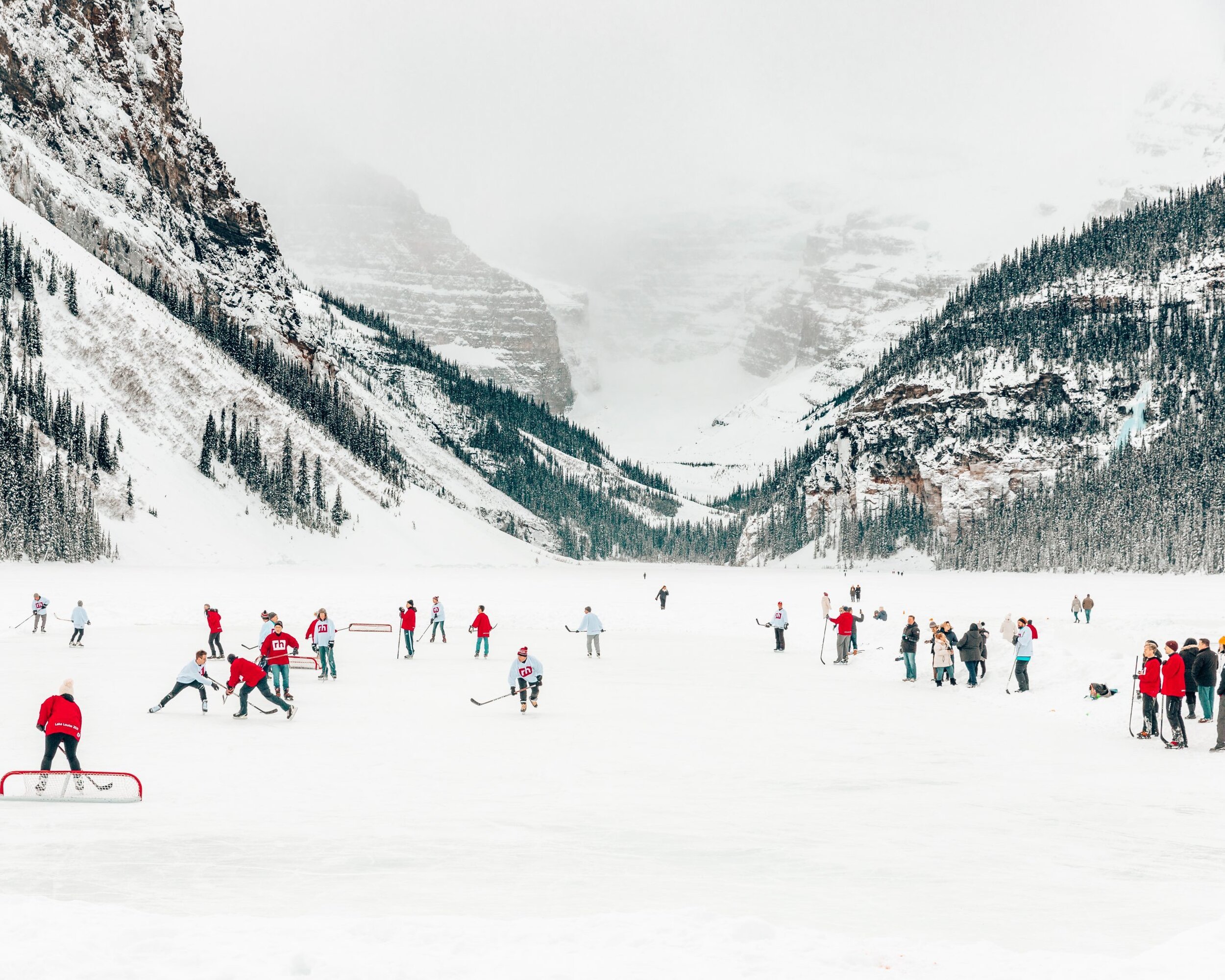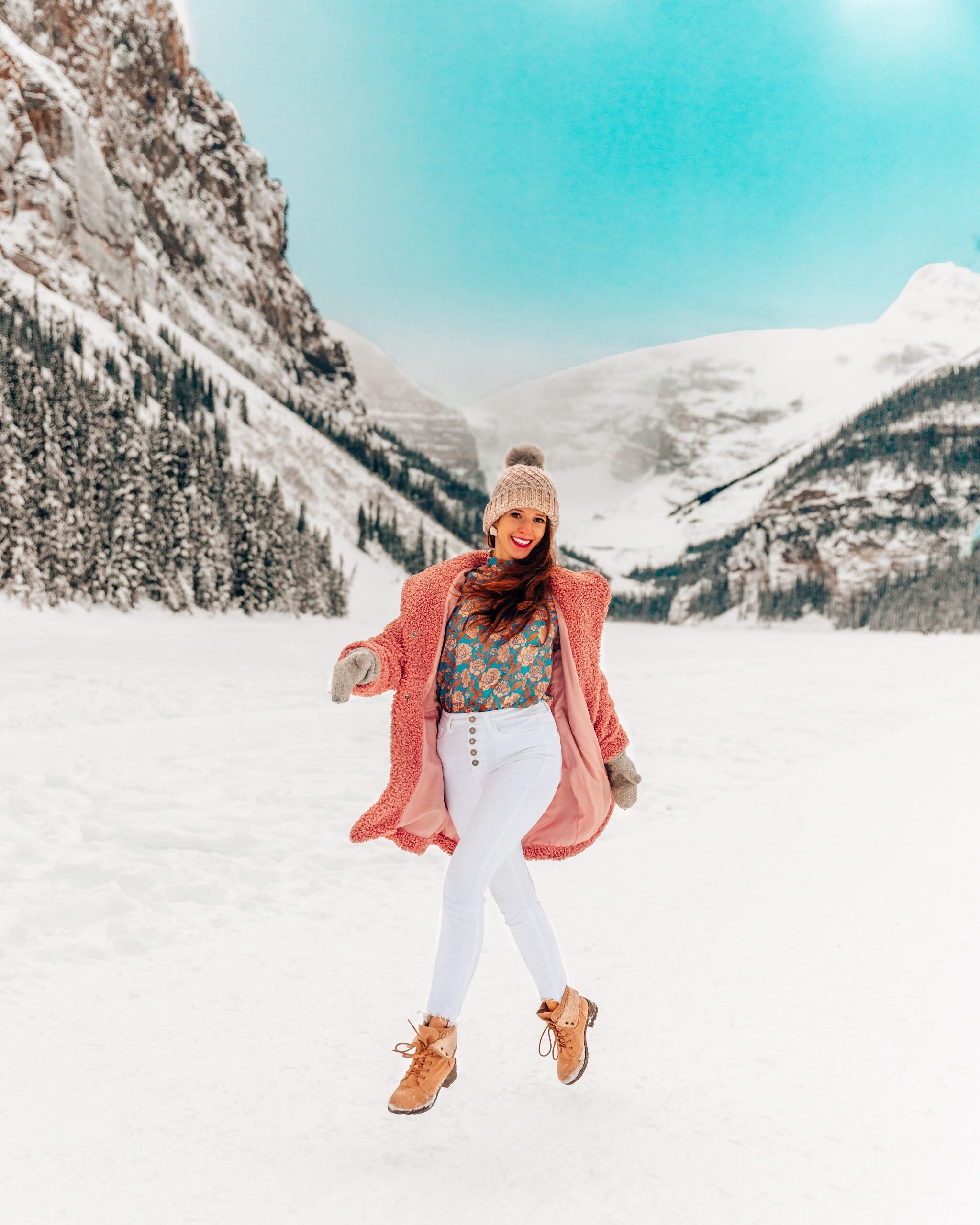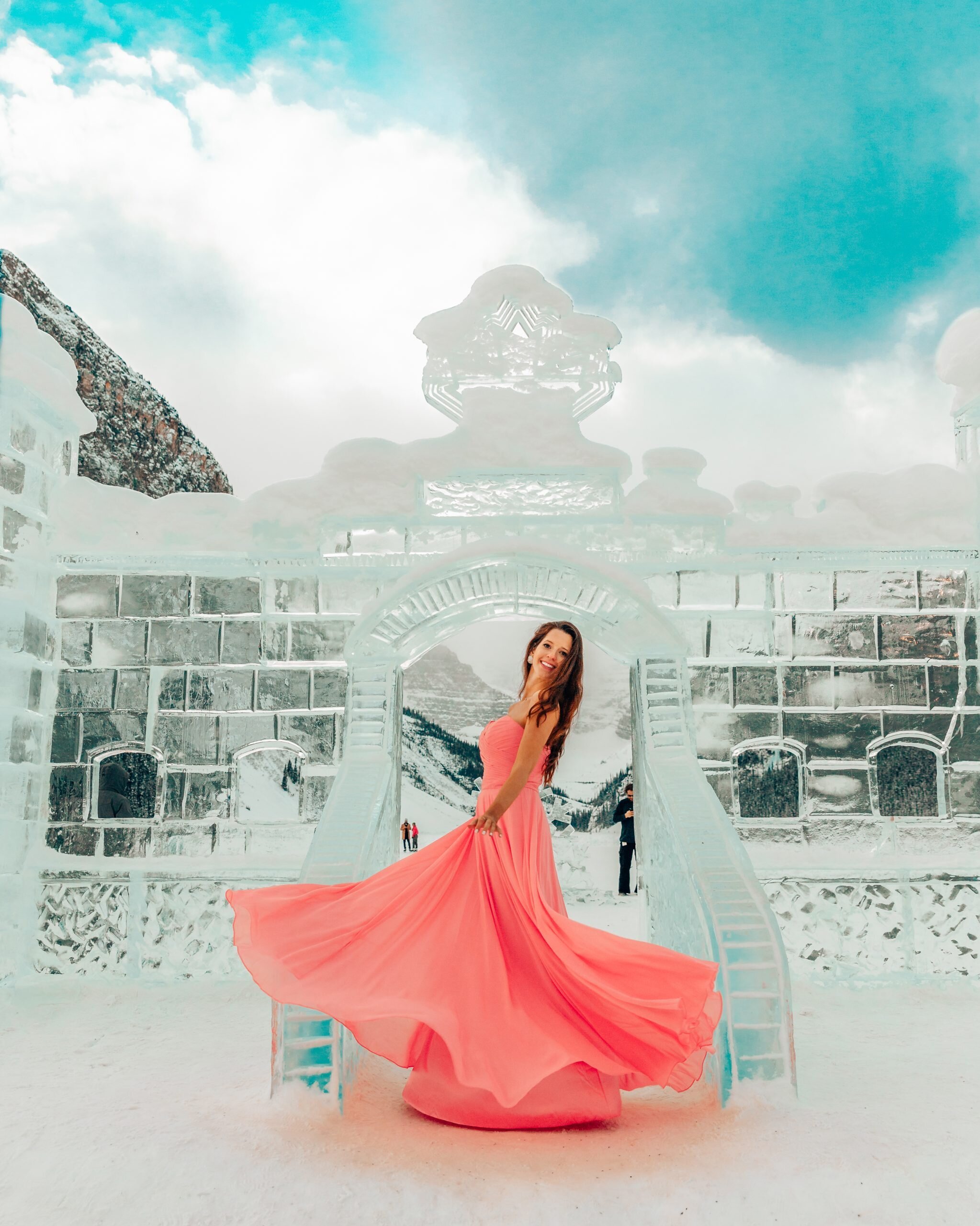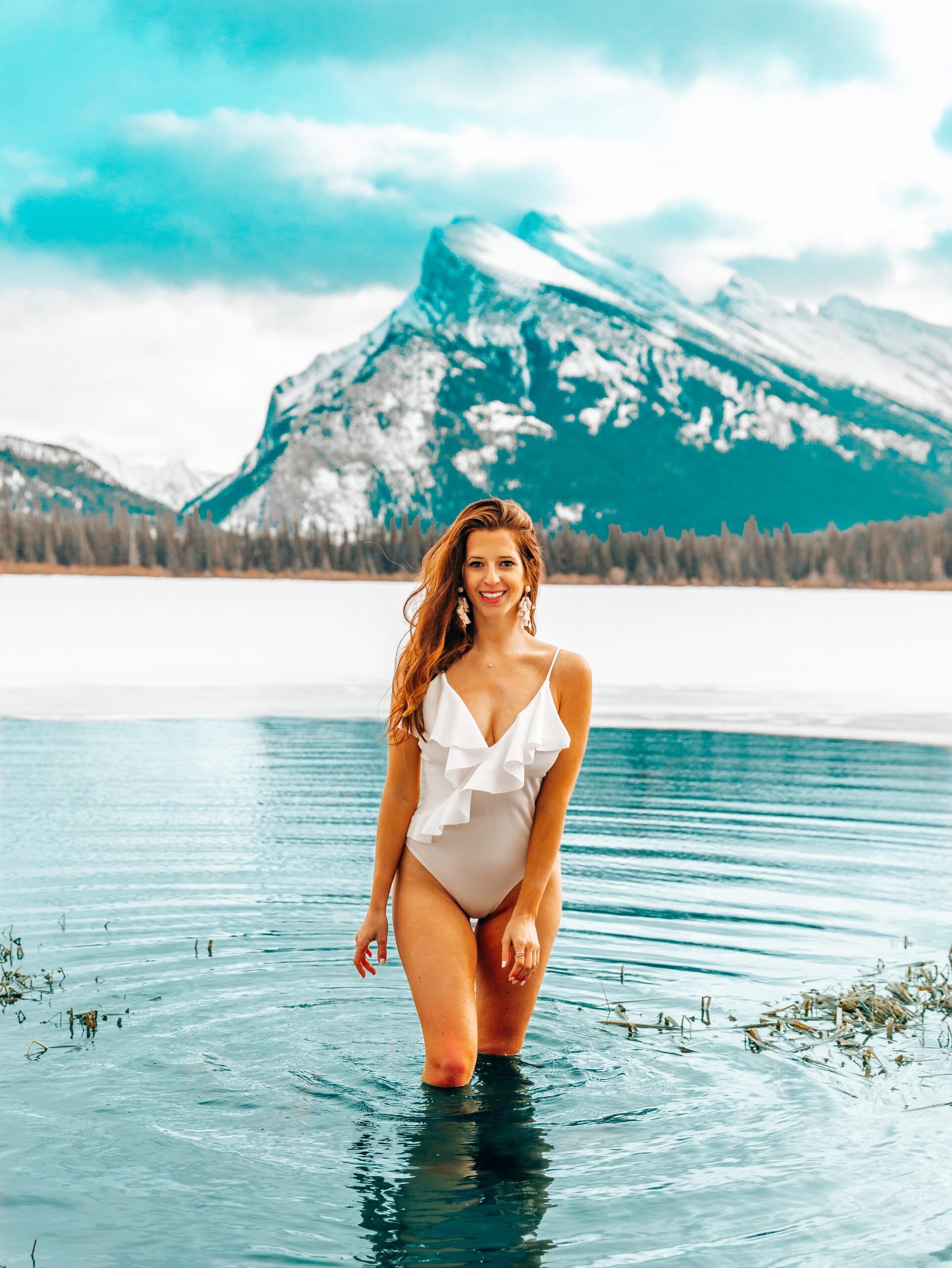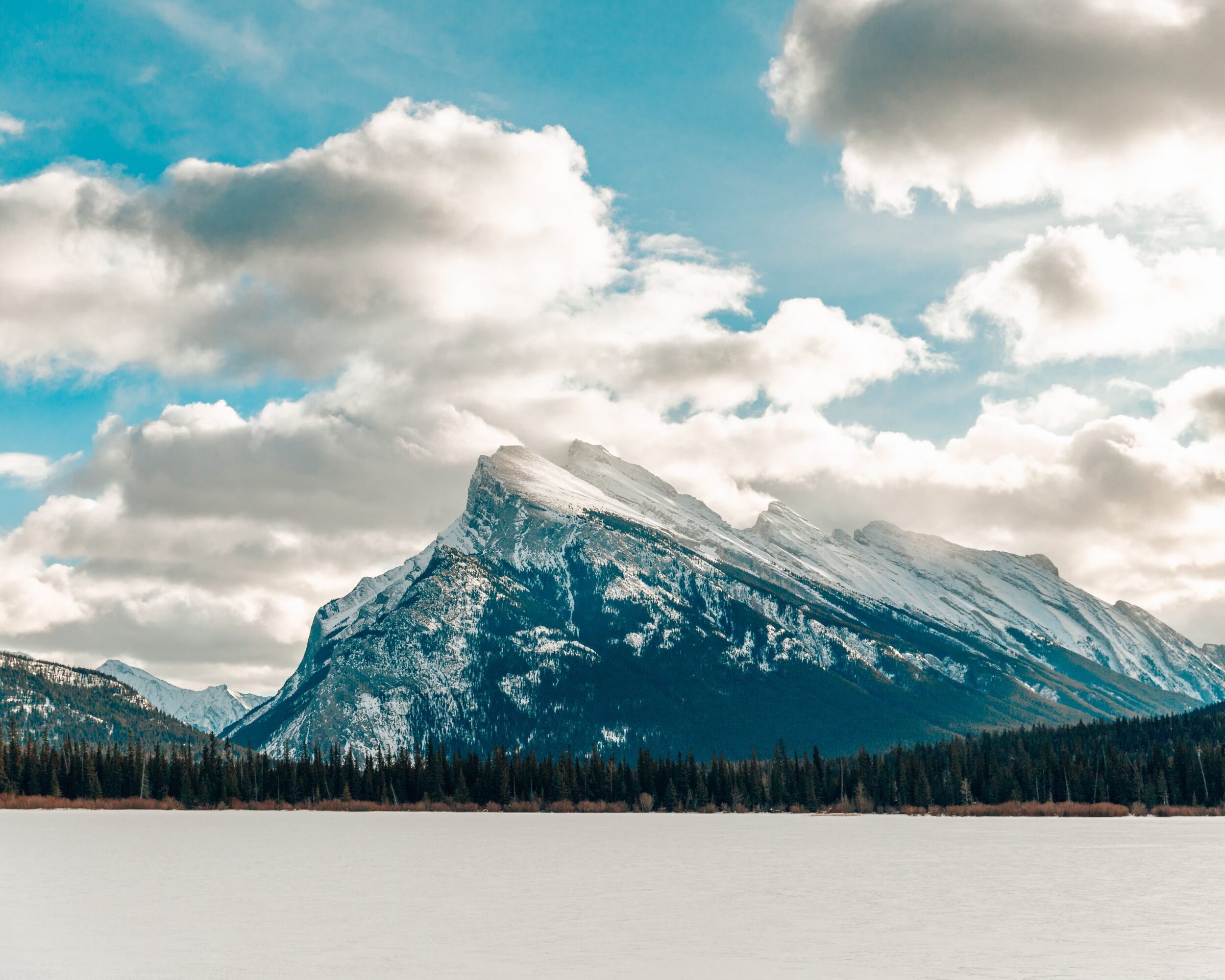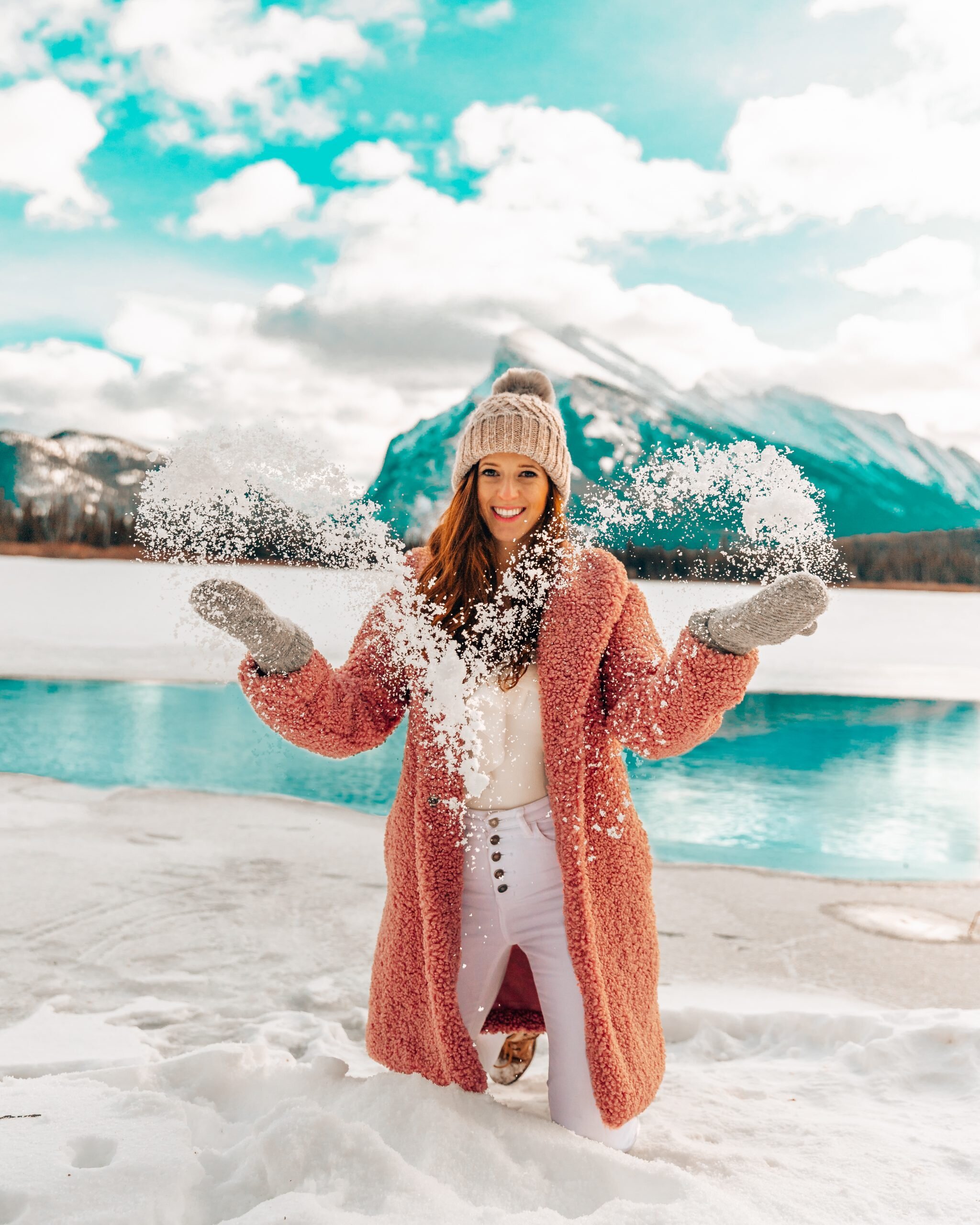By Bettina Staerkle
Originally from Switzerland, Bettina’s goal is to inspire you to explore the world, even if you have a full-time job. With her travel content and photography, she wants to spark your sense of wanderlust!
By now everyone has seen pictures of the beautiful turquoise lakes of the Canadian Rockies. Banff and Lake Louise are the epicenter of the Canadian wilderness and are equally worth a trip in Summer or Winter. Here is everything you need to know to visit Banff in Winter - where to stay, the most impressive natural wonders, and how to pack for your trip.
Make sure you don't miss our top five tips to make the most of your visit to Banff at the end of this post!
Banff National Park
Banff National Park is one of the most popular of Canada’s national parks. And for good reason! Banff is full of beautiful glacial lakes, majestic flowing rivers, and towering snowy peaks.
Banff National Park was formed in 1885, making it Canada’s oldest national park. The park encompasses over 2,500 square miles (6,600 square km) of the beautiful Canadian wilderness. With this much space, you can definitely find your own picturesque slice of nature.
The Canadian Pacific Railway was instrumental in the early growth of the park, building two of the most famous Canadian hotels here, the Banff Springs Hotel and Chateau Lake Louise. These magnificent hotels established Banff National Park as a popular tourist destination.
Winter tourism in Banff was fairly limited until 1968, when the Banff Springs Hotel modernized and became winterized! Previously it was only open during the warmer months of the year.
Getting to Banff in Winter
Even though Banff is in the middle of the Canadian Rocky Mountains, it is relatively easy to get to any time of the year. If you don’t already live within driving distance, you will most likely be flying into Calgary, which is about an hour and a half drive away. In comparison, our drive from Vancouver, took about 12 hours.
If you don’t want to drive through the Canadian Rockies in the middle of Winter, there are a number of shuttle buses driving from Calgary to Banff. Additionally, once in Banff there is a good public transportation system, and you can visit some incredible off the beaten path destinations with tours, such as the Winter Wonder Tour.
That being said, if you have your own vehicle, or a rental car, you can explore all that Banff has to offer at your own pace! Ensure that you have winter tires, as they are mandatory on all highways during the winter months until April.
Bow Valley Parkway
The Bow Valley Parkway is the scenic alternative to drive between Banff and Lake Louise. The road stretches 31 miles (50 km) with many great sights along the way. It's the perfect place to start exploring Banff National Park and you can't miss out on what it has to offer.
Johnston Canyon
One of the best stops along the Bow Valley Parkway, Johnston Canyon is dramatically carved into the limestone bedrock with steep canyon walls and plunging waterfalls. During winter, the falls freeze over, forming dramatic ice features. This is a very popular spot for ice walking and ice climbing and the views don't disappoint.
The two main falls, Lower Falls and Upper Falls, are a relatively easy 0.7 miles (1.1 km) and 1.6 miles (2.6 km) hike from the parking lot. If you're like us and are visiting in Winter, we recommend you wear good traction hiking shoes or bring ice cleats. The path can be quite slippery and difficult to master without the right shoes. The temperatures can be a few degrees cooler at the falls than in the parking lot. Bring your warm jacket to ensure you don't get cold during your hike!
Morant's Curve
This is, not surprisingly, one of the most photographed spots in all of Banff National Park. And for good reason, as you can snap some epic pictures here. Canadian freight trains curve through Banff National Park, with the Bow River in the foreground and large mountains in the background.
Finding Morant's Curve is relatively easy as it is well signed. Once you get onto the Bow Valley Parkway (driving from the North), it is a short five to ten-minute drive. There is a small parking lot right across the street from the viewpoint. However, getting an iconic photo with a freight train is the difficult part. The freight trains passing through here do not run on a schedule and run at different times every day. As such, you can wait for hours and not see a train, or you may spot one in just a few minutes. Either way, make sure you're prepared and bring snacks and water, and a lot of patience.
We visited the Morant's Curve twice during our stay in Banff. While we did not get to see a full freight train, we did see a small locomotive and snow plough come through Morant’s Curve.
Lake Louise
Lake Louise is another one of the quintessential Canadian Rockies “must-sees” that should be at the top of your list any time of year. You might know the lake due to its striking blue waters. In Winter, the lake is covered in ice and snow, but it is no less beautiful.
Instead of canoeing, you will find the lake turned into a hockey rink, an ice castle, and the perfect place to snowshoe and cross-country ski.
Lake Louise is easily accessible by car and is a 40 minutes drive away from Banff. If you're planning to visit during the holidays or on weekends, make sure you get there early in the day. It can be very busy, and the parking lot fills up quickly. Also be sure to check the weather before you plan your trip there as it can be dramatically different from Banff.
Vermilion Lakes
The Vermilion Lakes are less than 2 miles from the town of Banff, and yet they feel like they are a million miles away! You may have seen pictures of beautiful reflections of Mount Rundle at any time of the year, and this is where the pictures were taken from!
The great part about going to Vermilion Lakes in the Winter is that there is almost no one there. We spent a few hours one afternoon at Vermilion Lakes. During our time we only saw a handful of other people out enjoying the beautiful weather. This makes Vermilion Lakes easy to schedule into your itinerary any time of day.
If you are feeling adventurous, Vermilion Lakes is a great place to test the waters, quite literally, and take a polar dip. There are a few areas of the vast lake that are not covered in ice, if you need a refreshing dip! Just be sure to have a warm car waiting for you.
Where to Stay Near Banff
We were hosted by the Grande Rockies Resort and had a wonderful time at the resort. We are excited to share our stay with you. As always, all the opinions are our own. Thank you for supporting the businesses that support us!
Canmore is a great place to base your adventures of Banff National Park, as accommodation, food, and all other essentials are easier to come by and more affordable in Canmore compared to Banff and the entire town is less busy. We stayed in nearby Canmore, at the Grande Rockies Resort.
Our stay was in a one-bedroom suite which was perfect for our time in Banff National Park as it allowed us the room to relax in the evenings by the fireplace and make a delicious home cooked meal.
If you're looking to explore the trails around Canmore, the Grande Rockies Resort has fat tire bikes and snowshoes that can be reserved for free. We took the fat bike on a spin and it's incredibly smooth to ride in the snow. They also have a wonderful indoor swimming pool, indoor-outdoor hot tub, and heated indoor parking!
What Should I Pack for Banff in Winter?
The weather can get properly cold in the Canadian Rockies during the Winter. During our visit the nightly low temperatures reached -18C (0F), but -30C (-22F) would not be unheard of. That means you should be fully outfitted in winter gear from head to toe with a toque (Canadian warm winter hat), scarf, warm jacket, gloves, warm pants, and winter boots. If you are spending a few hours outdoors a very worthwhile investment are the glove warmer packets! We used these each day outside, and they easily lasted the whole day.
The Next Trip Top 5 Tips for Things to Do in Banff in Winter:
1) Prepare for the cold
This is Winter in the Canadian Rockies, and as we already mentioned it can get really cold! Even if you already live somewhere that has cold winters, it pays to be prepared for your trip to Banff. Often when we travel, we spend a lot more time outdoors, so be sure to pack all warm clothing and hand warmers!
2) Stay Hydrated
We noticed that our skin was very dry during our stay in Banff. This is partially due to the cold and dry air outside and the hot dry air inside from the building heaters. Another important factor is that we tend to drink less water when it is cold outside! Packing a thermos with some warm water, tea, or broth on your outdoor adventures is a great way to stay hydrated and warm at the same time!
3) Cook your own meals
While there are some fantastic restaurants in both Banff and Canmore, as they are located in a small remote resort town, they are priced accordingly! The easiest way to save a large amount of money on your trip to Banff is to cook a few meals in your hotel room. Our one-bedroom suite at the Grande Rockies Resort was perfect for us to cook some of our meals ourselves!
4) Hit the slopes
While we didn't have enough time on our trip to get some skiing and snowboarding in, this is a fantastic area for winter sports. Banff Sunshine and Lake Louise are by far the biggest and most popular ski mountains with tourists. Smaller Norquay is nearer to Banff and can be a great alternative to escape the crowds.
5) Have a flexible schedule
This is the number one mindset to have to enjoy your trip to Banff in the Winter. Winter weather is unpredictable and can be rather unfriendly towards Winter travelers. On our trip we encountered multiple road closures, rain, snow, and sunshine. You never really know what the weather conditions will be, but you just have to be able to roll with it. That being said, it's great to always have a secondary plan in the back of your mind if your first plans don't work out due to weather.









